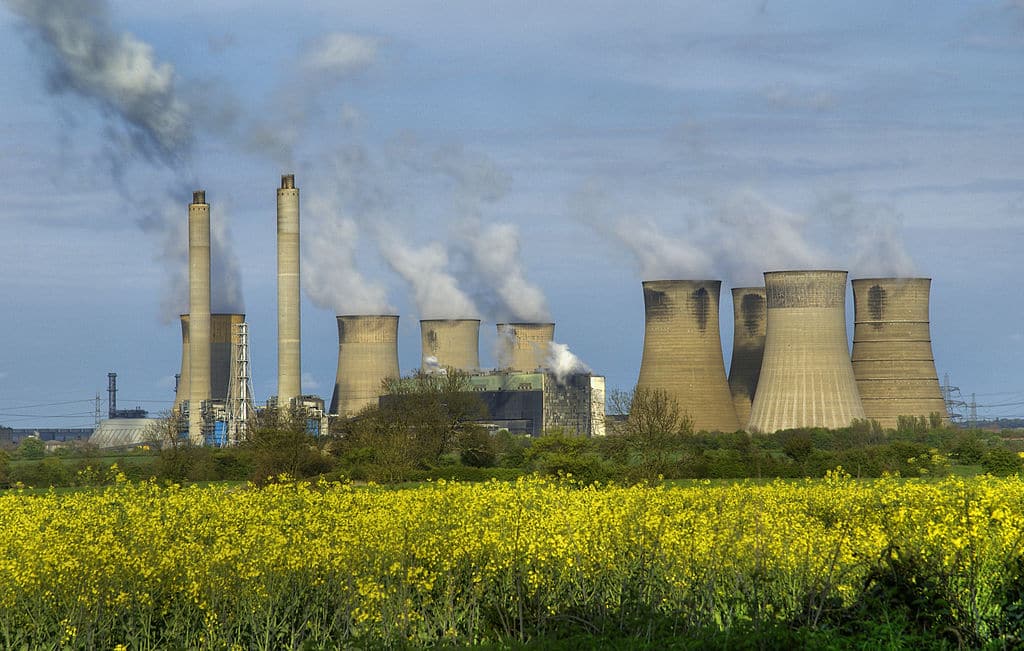Products You May Like
A coal plant in West Burton, UK. Paul Simpson / Contributor / Getty Images
 Why you can trust us
Why you can trust us
Founded in 2005 as an Ohio-based environmental newspaper, EcoWatch is a digital platform dedicated to publishing quality, science-based content on environmental issues, causes, and solutions.
Throughout the winter, the UK’s aging coal-fired plants have been on standby in case extra juice is needed in the midst of the ongoing energy crisis.
But none of them were fired up until Tuesday, as the country braced for the coldest night of 2023 so far, as The Guardian reported.
“The ESO has issued an additional notification that we will warm four of our five winter contingency coal units for potential use on Tuesday 7 March,” the National Grid Electricity System Operator (ESO) tweeted Tuesday morning local time.
In the end, the ESO ended up using power Tuesday afternoon from two of the plants, installations operated by French company EDF in West Burton in North Yorkshire in England, as the Press Association reported.
The turn to coal was partly necessitated by wintry weather conditions. The UK’s Met Office predicted snow and ice for a vast swathe of the country Tuesday, as The Guardian reported, and said that temperatures during the night in some places could reach a record low for the year of negative 15 degrees Celsius.
“Tonight could be the coldest of the year to date with a sharp frost in many areas,” the Met Office tweeted Tuesday.
It was exactly for days like this that the National Grid contracted some coal plants on the brink of retirement to remain ready to use during the winter, as the Press Association explained. The grid had warned customers in October that they might have to endure rolling blackouts during periods of high demand if it could not import enough gas or other electricity amidst an energy crisis sparked by Russia’s invasion of Ukraine, according to Reuters. Other factors spurring Tuesday’s coal use were a strike in France limiting electricity supplies from that country and abnormally low wind energy generation, the Press Association said.
The ESO also issued an electricity margin notice late Monday, meaning the margin between supply and expected demand had grown thin.
“An electricity margin notice (EMN) has been issued to the market. This is a routine tool that we use most winters, and means we are asking generators to make available any additional generation capacity they may have,” ESO tweeted. “The EMN does not mean electricity supply is at risk.”
The use of the coal plants enabled the ESO to discontinue the notice at 3:30 p.m, according to Reuters and the Press Association. The coal plants stopped feeding power to the grid after peak demand ended at 8:30 p.m. Tuesday.
In its coverage of the incident, City A.M. noted that coal is the most carbon intensive of the fossil fuels responsible for the climate crisis.
Learn More About Energy Solutions From EcoWatch
“National Grid is relying on coal, the world’s dirtiest energy source, to keep the country’s lights on tonight as a cold snap and planned nuclear shutdowns in France put pressure on the UK’s energy supplies,” Nicholas Earl wrote for the outlet.
However, despite Tuesday’s backslide, coal use in the UK is in significant decline. In 2022, it fell 15 percent to levels not seen since 1757, Carbon Brief reported Monday.
“That year in the UK, George II was king, William Cavendish was prime minister and the industrial revolution had not yet begun. A year earlier, Wolgang Amadeus Mozart had been born in Austria,” Simon Evans wrote for Carbon Brief.
Subscribe to get exclusive updates in our daily newsletter!
By signing up, you agree to the Terms of Use and Privacy Policy & to receive electronic communications from EcoWatch Media Group, which may include marketing promotions, advertisements and sponsored content.
